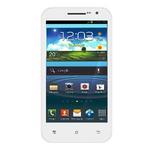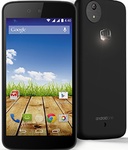Nokia 3.4 Review - Android
HMD Global greatly helped Nokia to become a mainstay in the smartphone market. That’s why we now have devices like the Nokia 3.4. This device is priced at Php7,990, and Nokia boasts its long battery life — which is essentially what other entry-level devices also have. What sets it apart is its stock Android interface. […]
This article, Nokia 3.4 Review, was originally published at NoypiGeeks | Philippines Technology News, Reviews and How to's.
HMD Global greatly helped Nokia to become a mainstay in the smartphone market. That’s why we now have devices like the Nokia 3.4.
This device is priced at Php7,990, and Nokia boasts its long battery life — which is essentially what other entry-level devices also have. What sets it apart is its stock Android interface. But are those features enough to justify its asking price? We find out in our Nokia 3.4 review.
Nokia 3.4 Specs
- Android 10 (Android 11 ready)
- Single/Dual SIM
- 6.39-inch HD+ punch-hole display, 1560 x 720 pixel resolution, 269ppi
- 1.8GHz Qualcomm Snapdragon 460 octa-core processor
- 4GB RAM
- Adreno 610 GPU
- 64GB eMMC 5.1 internal storage, expandable via microSD up to 512GB
- 8-megapixel front camera
- 13-megapixel + 5-megapixel (ultra-wide) + 2-megapixel (depth sensor) rear cameras
- Dedicated Google Assistant Button
- Headphone jack, Qualcomm aptX
- 4G LTE
- WiFi 802.11 b/g/n
- Bluetooth 4.2
- GPS, A-GPS, GLONASS, BDS, Galileo
- NFC (select markets)
- FM Radio
- USB Type-C
- Dimensions: 160.97 x 75.99 x 8.7mm
- Weight: 180g
- Colors: Fjord, Charcoal
- 4,000mAh non-removable battery, 10W fast charging
Design and Build Quality
Like most budget phones, the Nokia 3.4 is constructed with cheap plastic. However, that doesn’t mean that it’s entirely second-rate. The back panel has this ultra-thin line that results in a fingerprint-free, textured surface.

The fjord color that we’re reviewing has a Nordic finish (as what Nokia calls it), which has a two-tone paint job as it transitions to purple from blue when reflects light. But if it’s not your cup of tea, a Charcoal (black) option is also available.

Personally, I do like the build of this thing. The plastic material made it really light. Plus, the metal chassis resulted in excellent construction. I also appreciate how the Nokia-signature circular camera glass sits flush with an unnoticeable camera bump.

Unlike some of its competition, the Nokia 3.4 has a punch-hole on top of its 6.39-inch screen for the selfie camera. This makes for a cleaner look with a higher screen-to-body ratio. The bezels are relatively thin, with the one on the chin large enough to accommodate the Nokia logo.
 Left side
Left sideThere’s the SIM tray for two nano-SIM cards and a microSD card on the left side. Below is the dedicated Google Assistant, which you can turn on or off but sadly can’t be reassigned to a different command.
 Right side
Right sideThe opposite side has the lock/power switch and the volume controls. The buttons are not protruded enough, making them a little awkward to press at times. On the upside, it does provide a sleeker appeal.
 Top
TopWe rarely see the headphone jack on top of the device, which Nokia did on this device, next to the secondary microphone for noise isolation.

The main microphone is at the bottom, together with the loudspeaker and the USB Type-C port.
Overall, we forgive the plastic shell of the Nokia 3.4 due to its slimness, weight, and solid build.
Display and Audio
The Nokia 3.4 has a 6.39-inch HD+ punch-hole display, with a 1560 x 720-pixel resolution and 269ppi — something you’d expect from an entry-level mainstream smartphone. However, still quite disappointing since we’ve already seen a couple of Chinese phones that managed to have an FHD+ panel.

That said, sharpness is definitely one of its main weaknesses. You don’t have to look very closely to notice individual pixels. This makes texts from articles, social media, and home screen look soft. They’re still visible but not as sharp and as comfortable as what you’d get from an FHD screen.
On the upside, colors and contrast are surprisingly fine. Watching Netflix and YouTube videos on this thing would still be enjoyable.

The speakers are also surprisingly good. The volume is loud, and voice clarity is swell, perfect for watching vlogs or any content. Albeit, it does struggle when different musical instruments play all at the same time.
Sadly, no free headphone jack is included. You have to purchase yourself if you want a better listening experience or listen to FM Radio. Qualcomm’s aptX audio is present, nothing else.
Hardware and Performance
The Nokia 3.4 is rigged with a 1.8GHz Qualcomm Snapdragon 460 octa-core processor, with 4GB of RAM, 64GB of expandable storage (up to 512GB), and Adreno 610 GPU.
Nokia 3.4 benchmark scores

Bottomline is, the performance is passable but disappointing for the price. Social media browsing, taking pictures, and other light tasks are doable, but with noticeable lags here and there. I even noticed a slight delay when skipping tracks on Spotify.
 Call of Duty Mobile on the Nokia 3.4
Call of Duty Mobile on the Nokia 3.4The same can be said about gaming. We tried maxing out the graphics settings when playing Call of Duty Mobile and ended up with a rocky experience with many frame drops.
We played with the settings and settled with Low graphics quality and Medium frame rate for drastically better and smoother gaming performance.
Software and User Interface
Probably the only best thing about the Nokia 3.4 is its UI. Like all Nokia smartphones, the Nokia 3.4 is part of the Android One program. This means that it runs on pure, stock Android. No third-party interface can make things slow and complicated.

This also means that the device will be the first to get security updates and software upgrades. However, the unit that we have here still runs on Android 10, but an Android 11 update will surely arrive very soon.
With that said, everything is clean and straightforward on the Nokia 3.4, which makes us wish that other budget smartphone also runs on stock Android.

Since it doesn’t conform to any branded UI, you can’t see any bloatware. All generic Android apps like Google Photos for the gallery, Gmail for email, Chrome for web browsing, and more.
The dedicated Google button also works well. But if your phone is out of reach, you can easily call out “Hey Google,” and it would respond.

iPhone-like gesture navigation is enabled out of the box. It can be confusing at first, but you can get used to it easily. If you prefer the traditional three-button navigation, that option is available in the settings menu.
Probably my only gripe with the interface is the swipe fingerprint feature. Basically, you can swipe down/up the fingerprint scanner to summon the notifications tab. Don’t get me wrong; it’s convenient to swipe the scanner than to reach all the way up with your thumb to check notifications. However, it’s prone to accidental swipes and can be distracting when you’re watching movies or playing games. You can disable it in the settings menu.
Camera
Even for the price, the image quality you can get from the Nokia 3.4’s triple rear cameras is bad. Images from the 13-megapixel main shooter look washed out, with terrible colors and soft details. Things get worse when you’re shooting at night.
 13-megapixel camera | Outdoors
13-megapixel camera | Outdoors 13-megapixel camera | Outdoors
13-megapixel camera | Outdoorsrealme is first smartphone with TÜV Rheinland certification
12/04/2021 07:13 AM
Chinese brand will launch an electronic vehicle with Huawei technology
12/04/2021 10:50 AM
Nook expands online mortgage services to Southern Luzon with Calmar Land
12/04/2021 02:45 AM
‘Ask Ford’ self-service tool enhances customer experience and engagement
12/04/2021 07:00 AM
MSI launches its first authorized repair services outside Metro Manila
12/04/2021 09:38 AM
Smart three-peats as country's fastest mobile network - Ookla
12/04/2021 02:01 PM
- HEALTH
- Comics
- Libraries & Demo
- Sports Games
- Racing
- Photography
- Transportation
- Media & Video
- Sports
- Health & Fitness
- Weather
- Medical
- Cards & Casino
- Arcade & Action
- Personalization
- Social
- Communication
- Productivity
- Casual
- Shopping
- Tools
- Brain & Puzzle
- Business
- News & Magazines
- Finance
- Lifestyle
- Music & Audio
- Entertainment
- Travel & Local
- Books & Reference
- Education
2014 © Filipino apps and news







